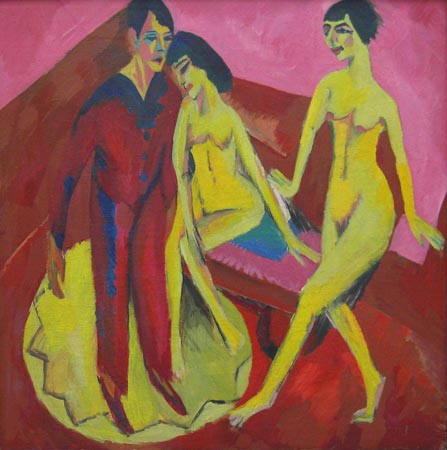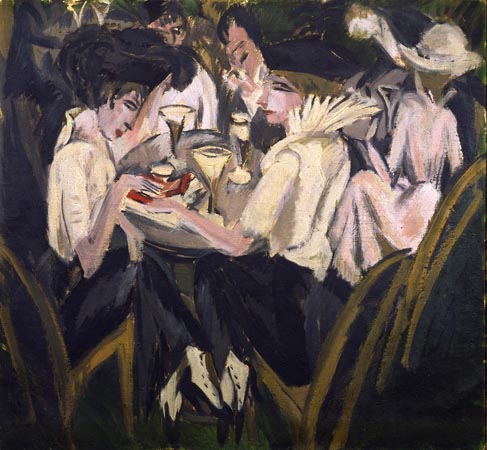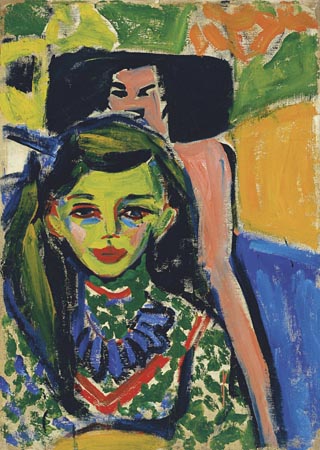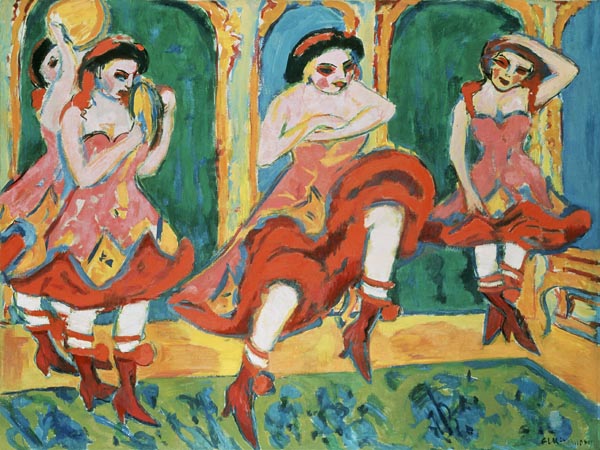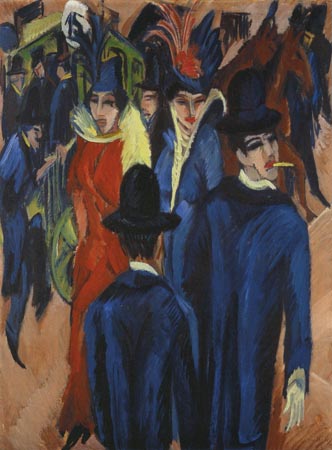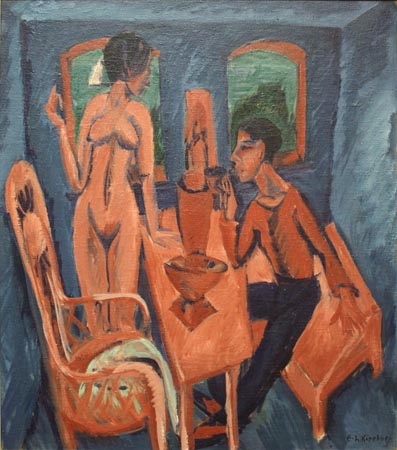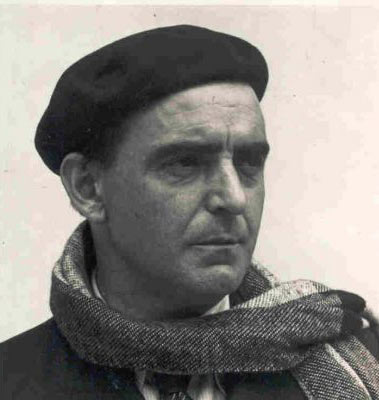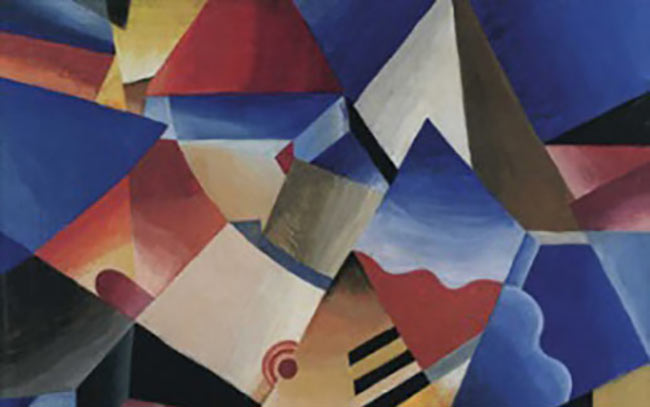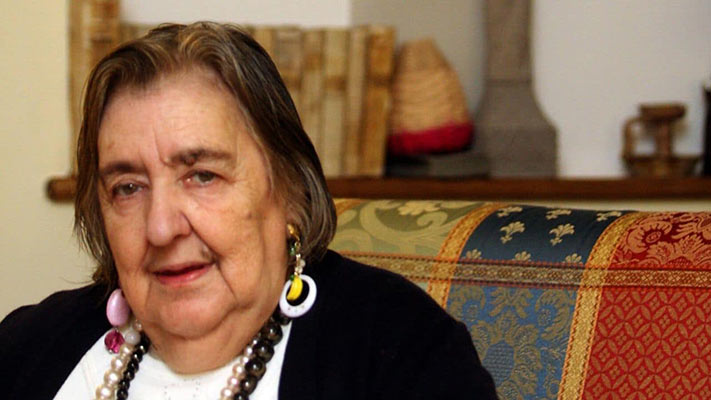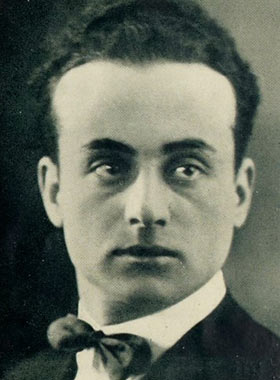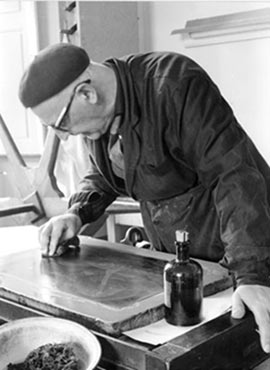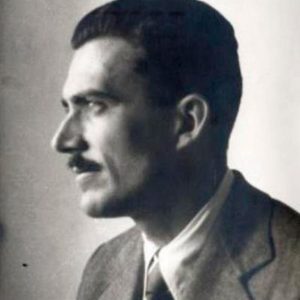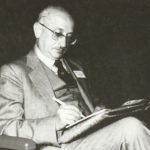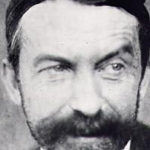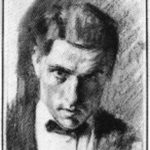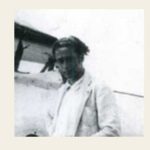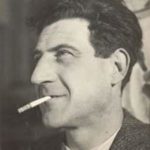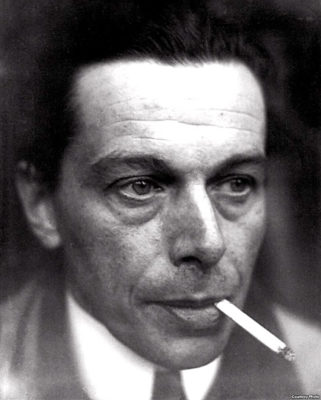
Kirchner Piper Ernst Ludwig
(English)
Born in 1880, Ernst Ludwig Kirchner studied architecture and painting before forming the artists’ group Die Brücke (“The Bridge”) in Dresden on 7 June 1905, with Fritz Bleyl, Erich Heckel, and Karl Schmidt-Rottluff. Kirchner moved to Berlin in 1911, and within two years the group split.
Kirchner worked at a feverish pace, producing art that drew its subject matter from his studio life with artist friends and models, the street and nightclub life of the city, and summer trips to beaches. His works were exhibited and collected from 1905, and by the mid-teens Kirchner had a number of devoted collectors, both private and institutional.
At the outbreak of World War I in 1914, Kirchner joined the German army, but eventually suffered a nervous breakdown. Despite ill health and struggles to recover, he continued to produce major paintings, prints, drawings and sculpture. In 1917 he moved to Davos, Switzerland, and began to include in his work images of rural life and the surrounding Alps. Through the 1920s major exhibitions of his work were held in Berlin, Frankfurt, Dresden, and other cities. In 1931 he was made a member of the Prussian Academy.
Labeled a degenerate artist by the Nazis, Kirchner was asked to resign from the Berlin Academy of Arts in 1933. In 1937, more than 600 of his works were confiscated from German museums and were either destroyed or sold, many ending up in America. In 1938 the psychological suffering caused by the Nazi authorities rejecting him as “un-German,” the dispersal and destruction of his works, and the Nazi occupation of Austria so close to his home in Davos led to Kirchner’s suicide.
The first public exhibition of Kirchner’s work in the United States was at the Armory Show of 1913, the first comprehensive exhibition of modern art in America. U.S. museum acquisitions of Kirchner’s work began in 1921 and steadily increased through the next four decades. Kirchner was given his first one-man museum show in the U.S. at the Detroit Institute of Arts in 1937. The National Gallery of Art, Washington, held a monographic exhibition of Kirchner’s art in 1992, based on works in the collections of the Gallery and its donors, and then held a major international loan exhibition of Kirchner’s art in 2003.
(Spanish)
Aschaffenburg (Alemania) 1880 – Frauenkirch ( Suiza) 1938, pintor expresionista. Fue uno de los cuatro estudiantes de la Escuela técnica superior de Dresde que fundaron el grupo expresionista Die Brücke en 1905. El Kirchner Museum Davos posee la mayor colección mundial de su obra.
En 1903 Kirchner estuvo en Múnich para estudiar pintura en la Escuela de Bellas Artes. En 1905 fundó con otros estudiantes el grupo Die Brücke (El puente) que pretendía crear un estilo plano con colores puros, inspirado en el arte primitivo y el fauvismo francés. Este grupo y Der Blaue Reiter formaron la segunda oleada expresionista.
Los rasgos más distintivos de este grupo son: el color antinatural, cálido, subjetivo y fulgurante; las formas más bien planas, con poco interés por los volúmenes y la perspectiva, que se violenta en escorzos imposibles; uso de contornos trazados con líneas gruesas, como incisiones en madera. Fueron estos artistas los que recuperaron la técnica de la xilografía, de origen medieval. Los temas son generalmente escabrosos, en sintonía con la forma expresiva de mostrarlos: prostitución, locales nocturnos de dudosa reputación, calles angostas con personajes trajeados…
Kirchner siguió viviendo en Dresde hasta 1911. Después se marchó a Berlín, donde supo reflejar la agitación y el movimiento de una gran ciudad moderna. Se interesó por el mundo de la prostitución callejera; un ejemplo destacado Prostituta en rojo se halla en el Museo Thyssen-Bornemisza de Madrid.
En 1914 con el estallido de la Primera Guerra Mundial, fue movilizado, pero sufre una grave crisis nerviosa. Al retornar de la guerra, en 1915, su situación mental no mejoró y su salud se resintió más tras sufrir un atropello. Tuvo que optar por la tranquilidad de Davos (Suiza), donde siguió pintando, en su mayor parte, paisajes más tranquilos, y menos estimados por la crítica actual.
En 1937, en plena ascensión del nazismo, su arte se calificó de arte degenerado y se destruyeron muchos de sus trabajos. Su precaria situación emocional empeoró a raíz de ello y se suicidó en Frauenkirch, cerca de Davos, en 1938.
